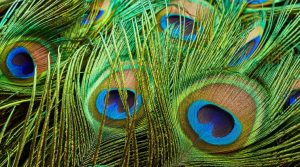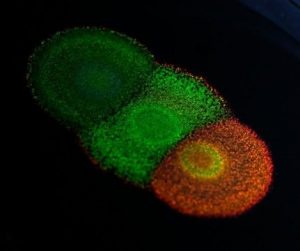Nature is a given source to go to for inspiration and new ideas on problem solving especially concerning design challenges or -problems.
“You could look at nature as being like a catalog of products, and all of those have benefited from a 3.8 billion year research and development period. And given that level of investment, it makes sense to use it.”
-Michael Pawlyn
A very interesting and by far not fully understood topic in biomimicry is the phenomenon of colour through structure. This can be observed in the wings of a colourful butterfly or the chitin in the shell of a beetle.
They are not coloured in the way we understand it, but have microscopic irregularities that reflect light in different angles and therefore change its frequencies, so when the light is received by the eye it appears as if the surface was coloured in many different colours when it’s actually not coloured at all.
„I like looking at what organisms do that’s completely different from the way we do the same thing. For instance, take a peacock feather. If we were to make it, we would use chemicals and pigments. But actually, the only pigment is brown. It’s done with structural color and transparent layers. When light reflects back to us through the layers, it creates the color blue or green or gold to your eye.“ – Janine Benyus

Structural colors arise from the physical interaction of light with biological nanostructures.
By researching the genetics of structural colours like we know from peacock feathers, researchers from the University of Cambridge have unlocked the code of some of the brightest, most vibrant colours in nature and maybe they’ve found an alternative to the way to manufacturing paint.
Credit: University of Cambridge
„The picture shows a colony of the Flavobacterium IR1, 2 cm in diameter, growing on a nutrient agar plate. The cells in the colony are highly organised, thus forming a 2-D photonic crystal that interferes with light. This results in structurally coloured bright and angle-specific hues with a concentric ring pattern indicating subtle changes in organisation. The older cells of IR1 in the colony centre are more disorganised and therefore loses colour. IR1 can be genetically modified from this wild-type strain to create new, living photonic structures.“
Studying the Flavobacterium they found that the colour of certain bacterium colonies comes not from pigments, but from their nanoscopic photonic structure which reflects light in certain angles and therefore causes different wavelengths. This results not only in bright colours, but also in a metallic shimmer and different tones of saturation.
After genetically mutating the bacteria the scientists were able to change the colonies dimension and their ability to move which manipulated their optical appearance. By changing the colonies geometry they changed their structure. From the original metallic green over the whole visible spectrum from red to blue, even changing their metallic appearance and making the colours duller or even disappear.
This new discovery could lead to new ways of manufacturing nanostuctured materials, such as bio degradable, non toxic paint.
Sources:
https://www.fastcompany.com/3000092/janine-benyus-biomimicry-innovation-inspired-nature
http://www.indianlink.com.au/peacock-feathers-inspire-new-variety-of-non-polluting-fabric-dyes/
https://www.sciencedaily.com/releases/2018/02/180219155022.htm
University of Cambridge. (2018, February 19). In living color: Brightly-colored bacteria could be used to ‚grow‘ paints and coatings. ScienceDaily. Retrieved December 16, 2018 from www.sciencedaily.com/releases/2018/02/180219155022.htm
